La Dolce Vita, Part I
I've been inundated with work and other things since being back, so this will be a brief post (filled with lots of non-knitting-related photos and commentary -- consider yourself warned!).
Those of you who guessed anywhere in the Mediterranean have a keen eye. And kudos to all of you who guessed Italy...
After an extremely long day of traveling and connections, we woke up on a hill, amid acres of lemon groves, in the quaint seaside town of Sorrento, across the bay from Naples and Mount Vesuvius.
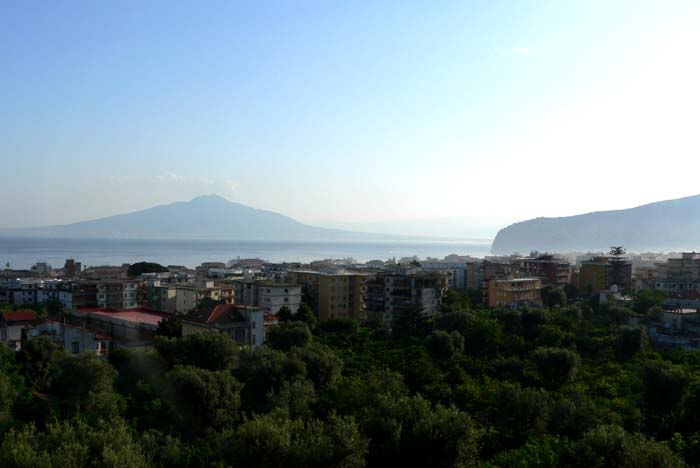
The coastal drive along the cliffside was breathtaking - if a little harrowing.

Getting used to reading clusters of signposts totem-poled upon each other at every crossroads was a challenge, but eventually, we made our way around the modern day city of Pompeii to the ruins of the infamous eruption of Mount Vesuvius back in 79 A.D.

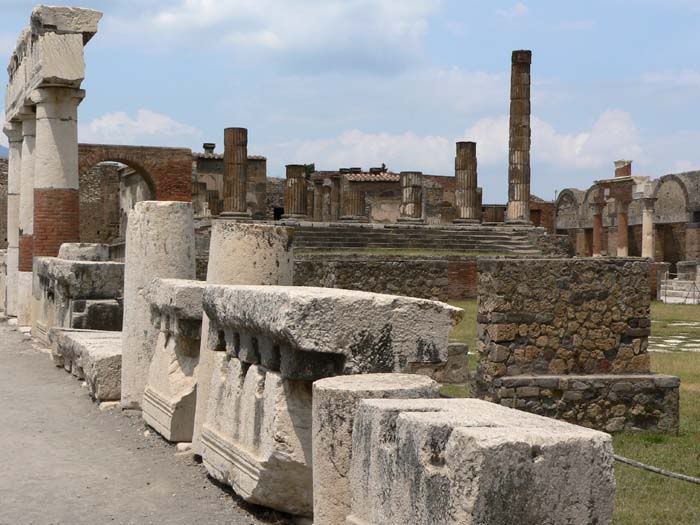

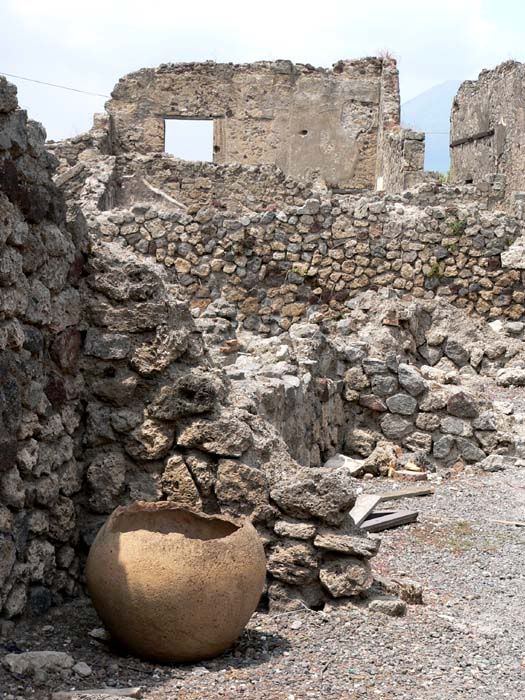
I wasn't quite sure what to expect, but once there, it's impossible not to see that the city and people who had made Pompeii their home were far from primitive. Did you know that Pompeii had once been a prosperous port? It had been about 500 meters from the water's edge, but after Vesuvius emptied itself onto the land, the buried city was then 2 km from the gulf. Today there is a weird Lost-City-of-Atlantis feeling about the place.
Some of the homes had clearly been truly magnificent, finesse in every architectural detail. This fountain at the rear of the interior courtyard, like others in the city, was worked all over in an intricate mosaic and fashioned with delicately forged statues.
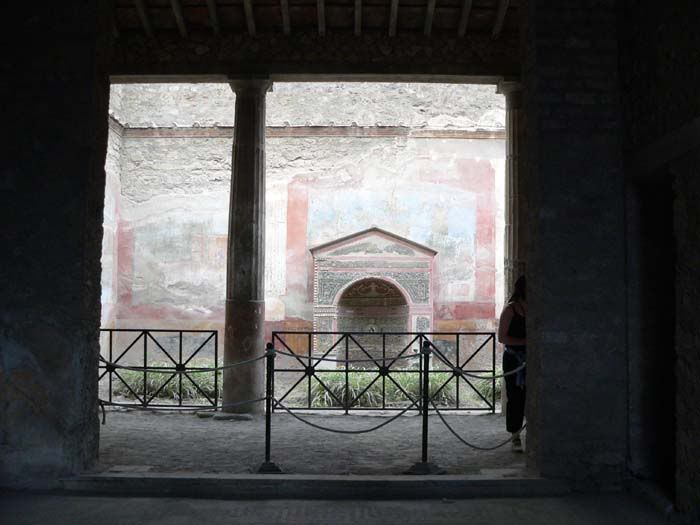

It seemed that the entire city had flourished with a healthy sense of aestheticism (which, in my opinion, is sadly lacking in most modern architecture that settles for function to the exclusion of form). This mosaic at the entrance to one of the grand homes of the city (now known as the House of the Tragic Poet) was meant as a clear warning: cave canem, "Beware of Dog".
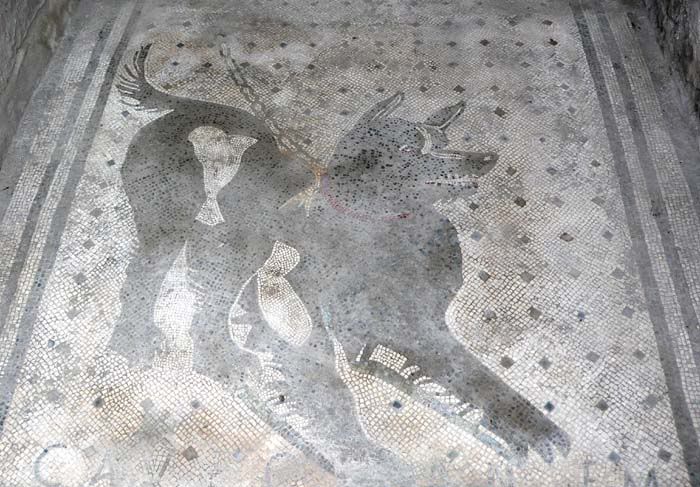
And they made aesthetics a high priority in just about everything they crafted. Assuming that that tradition had continued, if old Pompeii had survived to the present, it would probably be one of the most beautiful cities in the world. The frescoes, of which there were many, still possess their beauty, even tainted with the patina of weather and time. Just imagine how vibrant they had been in the halls and dining rooms of pre-eruption Pompeii.

Personally, I have a penchant for simple, clean linear furnishings, but was awed by the work that had been put into these:
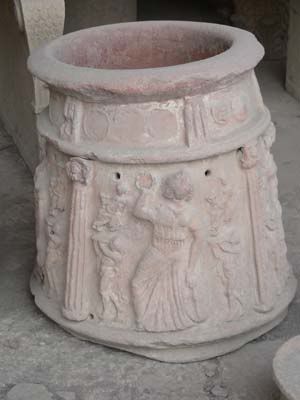
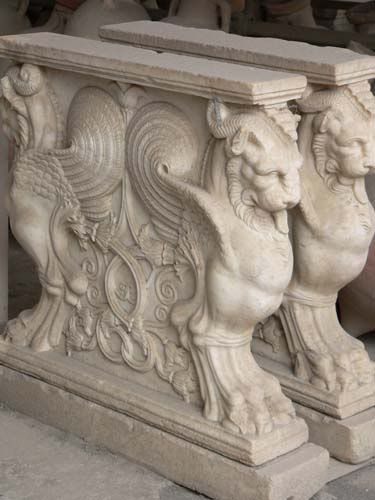
... as well as into even the most functional of food and water containers:
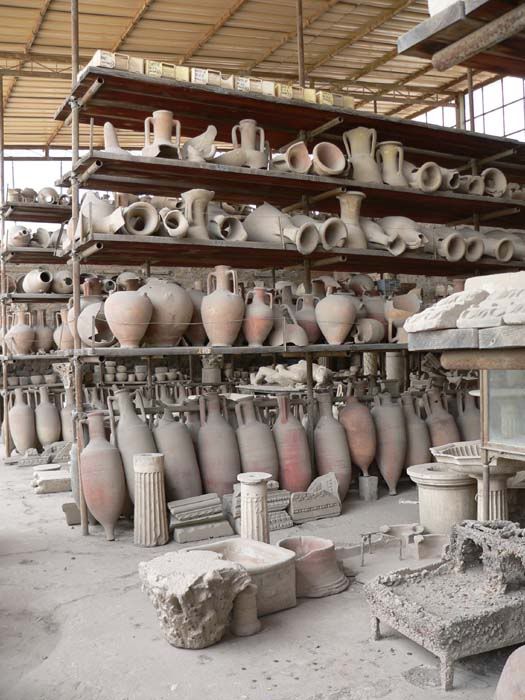
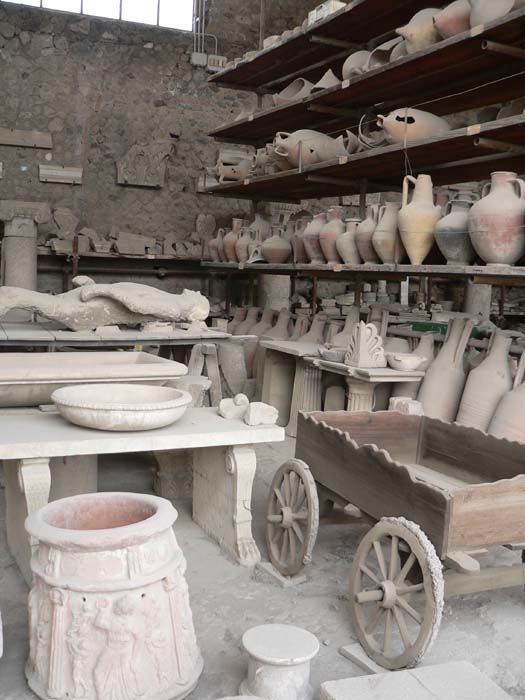
Look closely at the last picture. At the rear is a human form, molded in plaster that had been poured into an empty space archeologists had discovered in the layers of ash. There were, and probably still are, thousands of these imprints of volcano victims who had been buried in 4 meters of ash and sediment.
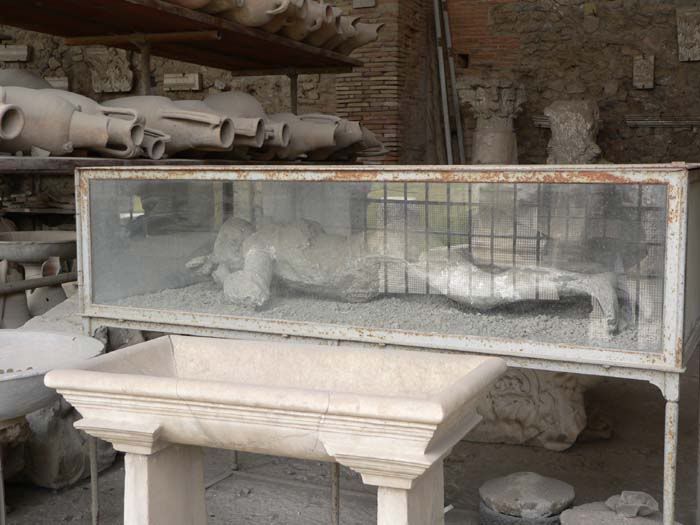
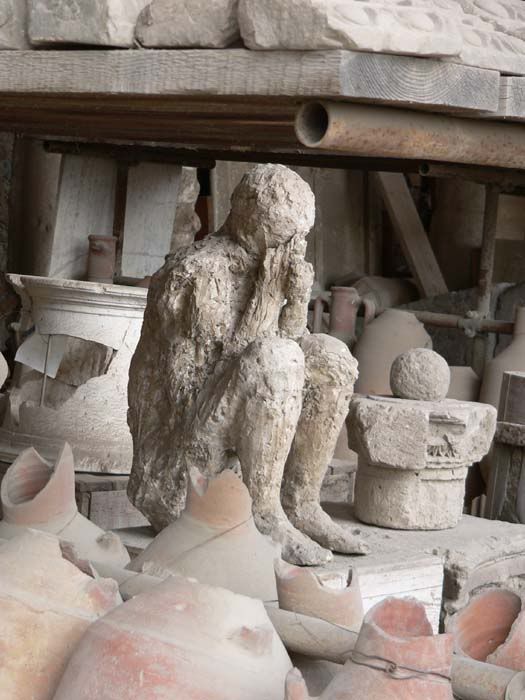
Old Pompeii was cobblestoned, with pavements set a foot or two higher than the road.
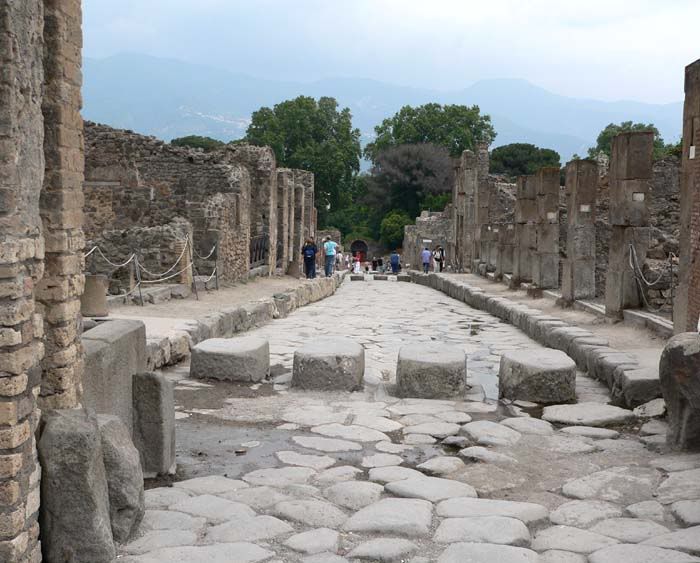
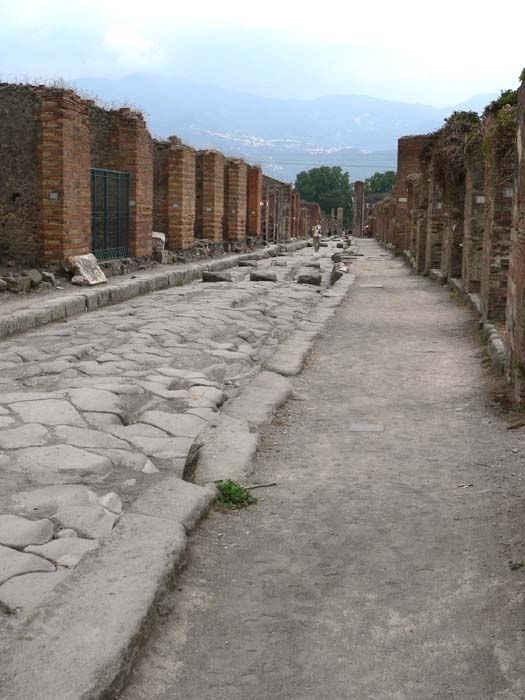
Midway through our casual meandering, dark clouds rolled in swiftly and obliterated the sun. Lightning and thunder on the horizon drew closer by the minute and the other tourists converged in the main streets, trying to make a hasty exit. But even with trainers on, it was a real struggle to get out of the city before the rain started. And all I could think of was how truly impossible it would have been for Pompeiians to run from the clouds of ash and sediment that were about to bury them alive.
They stood absolutely no chance.
So we left, only slightly soaked, but incredibly humbled. How many Pompeiians who were busy at work or play, rushing from one errand to another -- not having time to simply look up -- could have forseen what was to come? If you come away with anything after seeing Pompeii firsthand, it's a humbling sense of your own mortality.
And on that note, with the thunderstorm behind us, we reckoned it was time for a nap.

More on the trip (more upbeat, I promise!) and the swimming hole contest, next...





<< Home